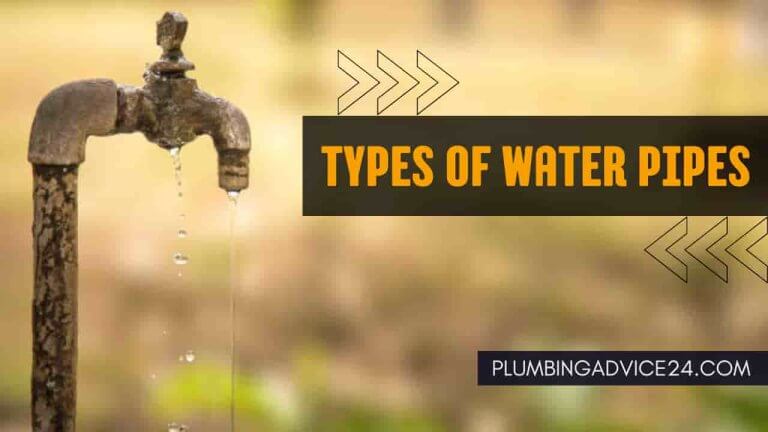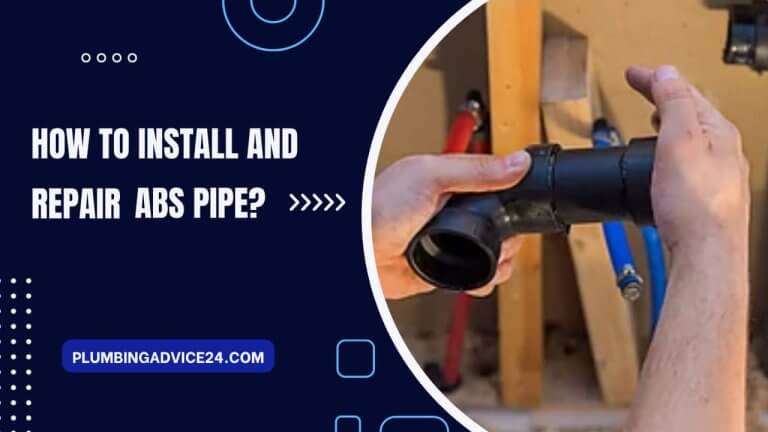15 Different Types of Plumbing Traps
Friends, in today’s topic, we will study plumbing traps which are also called water traps or drain traps. We all use plumbing traps in our daily lives, but we do not know or have little information about them. Plumbing traps work in many different places like our homes, office, big buildings, hotels, and restaurants, which plays a very important role. So friends, let’s get to today’s topic, where we will see what a plumbing trap is, the types of plumbing traps, different types of plumbing traps and their different places used, different plumbing traps designed, and so on.
What Is a Plumbing Trap?
A plumbing trap is a common device made by bending a pipe. The job of this trap is to prevent sewage gas and bad odors from entering the house. It also prevents insects, worms, cockroaches, and mice from entering the house. It can also be called a pipe trap or drain trap.
A plumbing trap is usually a curved portion of a drain pipe made of metal or PVC that looks like a U. It is mainly found under the sewers.
It is located in the sewers under the shower or bathtub in your home. If you open the cabinets under your kitchen sink or bathroom sink, you will see curved parts that may be some kind of plumbing trap. The bend of the plumbing trap retains water which blocks the sewer gas.
There are different types of plumbing traps which are as follows.
Must Read: What Is Plumbing Pipe | 22 Different Types of Plumbing pipes
How Many Types of Plumbing Traps?
Maintaining a water seal is critical to trap operation; Traps can dry out, and poor venting can suck or blow the water out of traps. This is usually avoided by venting the drain pipes downstream of the trap; By entering the atmosphere outside the building, drain lines never operate at pressures greater or less than atmospheric pressure.
When a vent cannot be provided, an air admittance valve can be used instead. These devices avoid negative pressure in the drain pipe by allowing room air to enter the drain pipe (behind the trap).
In the United States, plumbing codes generally limit how far a trap can be located from the nearest vent stack.
There are different types of traps in plumbing as follows :
- P-Trap
- S-Trap
- Q-Trap
- Bottle Trap
- Nahani Trap / Floor Trap
- Intercepting Trap
- Running Trap
- Drum Trap
- Low-Level Bath Trap
- Building Trap
- Straight Through Trap
- Gully Trap
- Bell Trap
- Grease Trap
- Silt Trap
Must Read: What Is Pipe Fitting | 12 Types of Pipe Fittings for Plumbing
1. P-Trap
A P-Trap is a multi-purpose plumbing fixture that traps debris from a sink and prevents it from clogging deep inside the plumbing system. It also prevents sewer gases and odors from entering the house. P-traps are mainly found in PVC or steel.
P-traps are often used for flushing out dirty water from any household appliance that drains the water, such as sinks, bathtubs, washing machines, etc. Most modern home bathrooms and kitchens have a P-trap installed under the sink. It can also be called a Sink trap.
2. S-Trap
S-traps are plumbing traps that have a distinct “S” shape. S-traps are easily recognizable in homes and are quite large. S-trap outlets are installed by the floor rather than the wall, and they are known to emit bad odors.
The main difference between P-traps and S-traps is that S-traps are larger and waste more water. Essentially, the S trap is an undiscovered trap. If the trap seal has dried due to lack of proper ventilation, the sewer gas, odor, and the way for insects/rats to enter the living space are opened.
For that reason, S-traps are no longer even coded, so only older homes that have not been updated have S-traps.
3. Q-Trap
Q-traps are mainly used in buildings with more than one floor. They work almost identically to P-traps and S-traps but are considered ideal for use in upstairs bathrooms. Its “Q” shape distinguishes it from P-traps and S-traps. In addition, Q-traps are your basic plumbing traps aimed at removing sewage odors using water and piping.
The Q-Trap traps water in the “U” shaped part of its body just like the P-Trap, and it is effective. The use of a Q trap is determined by the space under the sewer; if you have space below the sewer on the lower floor, you can also use it there.
Must Read: What is Plumbing Tools | 31 Types of Plumbing Hand Tools
4. Bottle Trap
The bottle trap is suitable for small spaces under the sink that are stretched due to its shape. They connect directly to the sink above and to the horizontal wall below, which maximizes space and makes it easy to maintain.
A bottle trap is a basin accessory that does more than make the bathroom beautiful. Bottle traps are effective in trapping and reducing odors from your sink and are their main appeal. Their simple horizontal design makes bottle traps easy to install, and because they are durable, they are ideal for deep washbasins.
5. Nahani Trap / Floor Trap
Nahani Trap or Floor Trap is provided under the floor to collect wastewater from the shower, balcony, WC drain area, and kitchen sink area. And it is very effective. They trap water coming from sinks and showers in bathrooms and prevent sewage effluent from entering the living space.
A good nahani trap should keep water seals efficient in all flow conditions and not allow water to accumulate on the floor, and if they do, they should be easily cleanable. Removable steel or PVC mesh is usually installed on top of the nahani trap to filter the debris.
6. Intercepting Trap
Intercepting traps are commonly used in large buildings, offices, and industries. These traps are used to prevent contaminants from entering the building’s public sewers by providing a water seal. They are effective and can handle large amounts of wastewater from multiple plumbing applications in a large building.
Intercepting traps keep away from bugs and other pests due to their deep U-part and strongness. You can trust intercepting traps to control the water consumption of the entire building.
Must Read: What Is Plumbing Pipe Materials | What Is Used to Make Plumbing Pipes
7. Running Trap
Running traps are building codes, sometimes called building traps or sewer traps. This trap is a curved sewer line pipe that holds a small amount of water at all times. This water creates a barrier that prevents sewage gases and pests from entering your home through the sewer system.
In the past, individual traps were used for each plumbing fixture, but these traps have been banned for many years by plumbing codes. These traps are usually in the crawl space under the house or buried in the ground outside the house and provide a seal to secure them. Running traps are used in public toilets where several washbasins are in a row. It is also called a double sink trap, as it is used to connect two sinks.
8. Drum Trap
The drum trap works like any other trap to prevent sewage gas from entering your home, but instead of simply dipping into a pipe to create a self-scoring P-trap, the drum trap has a large ‘vessel’ that holds a large amount of water.
The drum trap contains so much water that any solids entering the trap will not be pulled directly, allowing solids to accumulate at the bottom of the trap. This makes drum traps more likely to get clogged and requires more cleaning at regular intervals. It is also more likely to corrode due to excess water, which is why it is found in older constructions.
9. Low-Level Bath Trap
Low-level bath traps mean the floor does not need to be cut or broken to fit the trap. Secondly, if you have limited space under your tub or shower, you don’t have to worry; you can use these traps. Other than that, they are best for controlling bath overflow, and they need a simple banjo connector when you install them.
You can also add extra inlets for your shallow trap if you have a problem with water from the bath. However, it is not necessary for all homeowners but eliminates the need for additional inlet banjo connectors. It can also be called a bathtub trap.
Must Read: 33 Different Types of Wrenches | Best Company for a Wrench
10. Building Trap
A building trap is a U-shape of a P-trap installed on each plumbing fixture drain. It provides liquid seals to keep unwanted bugs and pests out of the house or building and prevent sewage gases from returning. It is also known as the “P-Trap of the whole house” because it is on the main drain line.
They are usually buried in the crawl space under the house or in the ground outside the house and provide a single seal to secure the whole house. It was used primarily when individual plumbing fixtures were required for each plumbing fixture but is currently prohibited by the building code for many years.
11. Straight Through Trap
Straight-through traps are a common form of plumbing trap used in many homes. It is less effective as the water from this trap moves slowly. But some newer models have valves that can affect the seal and speed.
Straight-through traps are still very useful for spaces where space is limited. They are also easy to hide behind a pedestal basin. Homeowners usually install a straight-through trap in a small full bathroom with a tight wash basin or sink.
12. Gully Trap
A Gully trap is a ground-based basin that receives piped sewage from inside your home and immediately discharges it into the sewage network. These traps are best considered as a bridge between the outflow of water from the house and the barrier to connect this waste to the underground drainage system.
The integrity of the water seal in gulley traps is very important. The water seal should be kept at least 50 millimeters, so you do not have to worry about losing it. Insects and bugs can enter the trap, so water seals are extremely important when it comes to these traps.
Gulley traps typically enable kitchen sinks, washing machines, and waste pipes to be connected to the sewer system through a grill cover in the alley and allow the net to be cleaned when needed.
13. Bell Trap
The Bell trap creates a bell-shaped reservoir around the vertical drainage pipe in the drain where the trap seals. The water that flows from the top of the bell trap drain fills the reservoir, with excess water flowing from the bottom of the pipe. This trap is extremely effective in suppressing sewer odor.
Bell traps are easy to install and go directly to the top of the drain body to trap water in the well to keep gases inside. This trap drain is primarily designed as a drainage unit to place in a workshop, garage, or any place where floor drainage is required.
Bell traps use water reservoirs to prevent sewage gases from entering the house through piping. These traps do not self-clean; seal depth is shallow, flows slowly, and closes easily, which is why many building codes prohibit bell traps.
14. Grease Trap
Grease traps are designed to prevent most grease and solids from entering the sewage system. Restaurants and food services produce kitchen waste grease. Grease is the primary cause of sewer blockage, which causes sewer overflow. This trap contributes a lot there. These traps reduce the amount of fat, oil, grease, and solids entering sewers.
They have boxes in the drain between the kitchen sink and the sewer system. They have only dirty water flowing in the kitchen and no other drainage system, such as toilet service. It is considered an integral part of all restaurants and fast-food establishments.
Once I saw a grease trap cleaning near me. Here are some steps you can take to begin the process of grease trap cleaning.
- Gently remove the lid from the grease trap so that you do not damage any gasket on the lid.
- Inspect the parts of the grease trap after the lid is removed.
- Use a small bucket or small pump to remove water from your grease trap tank.
- Start removing grease from the net using another bucket, shovel, or other heavy-duty scoopers.
- Scrape down the sides of the lid and net with your bucket to remove excess grease.
- Clean the lids, sides, and parts of the net with soap, scrub, and rinse with water.
- Pour clean water into your grease trap, reinstall your removed grease parts and close the lid.
- Note in the FOG report provided by the EPA for your records.
15. Silt Trap
Silt traps are also known as gross pollutant collection traps. It is used to remove floating debris from rainwater runoff. They prevent non-biodegradable contaminants such as silt and solid waste from entering our waterways through drainage systems.
Silt can interfere with the drainage system’s ability to remove surface water. As the silt builds up, the drainage stops. This increases the risk of surface flooding and eventually requires the replacement of the drainage system. Silt traps are the best method to prevent soakaways by preventing siltation in the drainage system.
Must Read: What Type of Piping Is Used in Homes | Types of Pipes for Water Supply
What Are the Types of Plumbing Traps?
There are 15 types of plumbing traps as follows:
- P-Trap
- S-Trap
- Q-Trap
- Bottle Trap
- Nahani Trap / Floor Trap
- Intercepting Trap
- Running Trap
- Drum Trap
- Low-Level Bath Trap
- Building Trap
- Straight Through Trap
- Gully Trap
- Bell Trap
- Grease Trap
- Silt Trap
What Is a Sink Grease Trap?
A sink grease trap is a grease trap installed under the sink. A grease trap is a place where sewage containing FOG flows before entering a drainage system. It is designed to prevent or “trap” the receptive FOG so that clear water can escape.
What Is a P Trap?
A P-trap is a U-shaped section of pipe located below a sink. Its function is to capture and retain enough water, which acts as a barrier to prevent sewage gases and odors from entering the bathroom.
How to Do Grease Trap Cleaning?
The steps to clean the grease trap are as follows:
- Gently remove the lid from the grease trap so that you do not damage any gasket on the lid.
- Inspect the parts of the grease trap after the lid is removed.
- Use a small bucket or small pump to remove water from your grease trap tank.
- Start removing grease from the net using another bucket, shovel, or other heavy-duty scoopers.
- Scrape down the sides of the lid and net with your bucket to remove excess grease.
- Clean the lids, sides, and parts of the net with soap and scrub and rinse with water.
- Pour clean water into your grease trap, reinstall your removed grease parts and close the lid.
- Note in the FOG report provided by the EPA for your records.
Can the P-Trap Clog?
If the water in your sink takes longer than average to drain under the sink, you may have a clogged P-Trap. In the case of a clogged P-trap, it is best to turn off the water and place a small bucket under the trap.
What Are the Signs of Sewage Backup?
If you notice any of the following signs, these could be signs of your sewer backing up.
- A roaring sound comes from the drain.
- Unusual odors come from the sink, shower, or drain.
- One or more drains are moving slower than normal.
- Water backup in shower or tub.
What Is a Trap in Plumbing?
In plumbing, a trap is a U-shaped section of pipe designed to trap a liquid or gas to prevent unwanted flow. It also prevents insects, worms, cockroaches, and mice from entering the house.
If You Liked This Post? So Share It with Your Friends
Suggested Articles:























